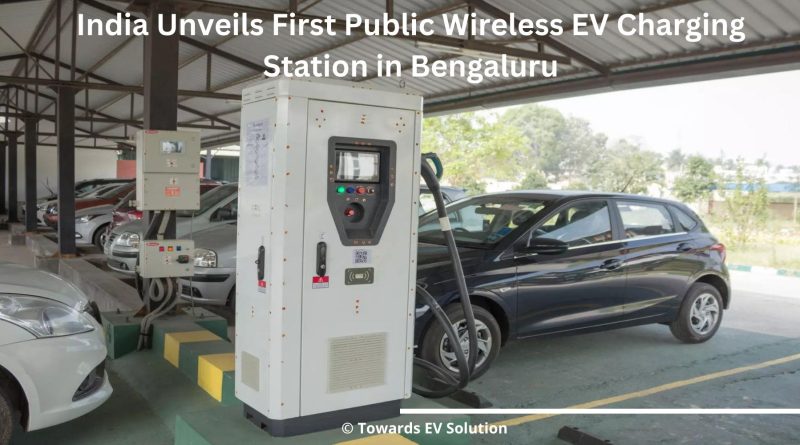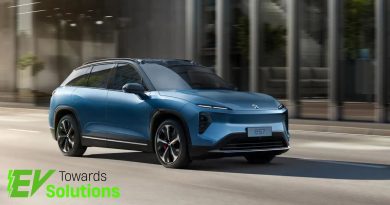India Unveils First Public Wireless EV Charging Station in Bengaluru – Transforming the EV Infrastructure
India has taken a significant step toward revolutionizing its electric vehicle (EV) infrastructure with the launch of the country’s first public wireless electric vehicle charging station in Bengaluru. This cutting-edge technology allows EV users to charge their vehicles without the need for physical cables, offering convenience and efficiency in busy urban centers. The initiative, led by ChargeGrid in collaboration with the Ministry of Heavy Industries, is part of India’s broader mission to accelerate EV adoption in line with the government’s ambitious National Electric Mobility Mission Plan (NEMMP 2020).
India Electric Vehicle Market Size 2024 to 2034
According to Precedence Research’s report, the India electric vehicles market size was USD 6.87 billion in 2023. It is predicted to increase from USD 11.36 billion in 2024 to approximately USD 1,053.10 billion by 2034. The market is expanding at a strong compound annual growth rate (CAGR) of 57.3% between 2024 and 2034.
India’s EV Growth and Government Push
NITI Aayog has reported that the electric car market in India is rapidly expanding where automobile industry is expected to sell 30% of electric vehicles by 2030. The central government of India’s FAME-II initiative provided ₹10,000 crore (USD 1.3 billion) for managing incentives for EVs both for its use and its production by making subsidies in the charging infrastructure as well.
Additionally, the Ministry of Heavy Industries has said that by 2025, about 7 million electric and hybrid vehicles swarm Indian roads and streets due to government incentives and subsidies and changing consumer psychology.
India’s Electric Vehicle Market Size (2022–2030)
| Year | EV Market Size (USD Billion) | EV Sales (Million Units) | Projected Growth Rate (%) |
| 2022 | 6.9 | 0.85 | — |
| 2023 | 11.36 | 1.17 | 37.6 |
| 2024 (Est.) | 16.3 | 1.70 | 40.2 |
| 2025 (Est.) | 25.7 | 2.5 | 42.0 |
| 2030 (Est.) | 1053.10 | 10.0 | — |
Wireless EV Charging – A Game-Changing Technology
Wireless electric vehicle charging is set to play a key role in India’s transition to electric mobility, with NITI Aayog highlighting that seamless, cable-free solutions will contribute to the country’s ambitious goal of net-zero carbon emissions by 2070. According to International Energy Agency (IEA), India’s electric vehicle charging infrastructure is expected to grow by a CAGR of 42% from 2024 to 2030, driven by innovations in wireless technology.
A report by the Global EV Outlook 2023 published by the IEA estimates that wireless charging technology will account for 10-12% of the total charging infrastructure globally by 2030, a significant leap from the current 1-2%.
India’s EV ecosystem has support from both the central as well as state governments. New Gen EV charging infrastructure has largely been funded through the umbrella program called FAME-II in the country.
Subsidies for EV Charging Infrastructure by Indian States (2024)
| State | Subsidy for Charging Infra (Per Station) | Maximum Subsidy (INR) | Road Tax Discount (%) |
| Maharashtra | ₹ 5,000 | ₹ 2,50,000 | 100% |
| Delhi | ₹ 10,000 | ₹ 2,00,000 | 100% |
| Karnataka | ₹ 7,000 | ₹ 1,75,000 | 100% |
| Tamil Nadu | ₹ 8,000 | ₹ 2,00,000 | 100% |
| Gujarat | ₹ 10,000 | ₹ 1,50,000 | 50% |
| West Bengal | ₹ 6,000 | ₹ 1,50,000 | 100% |
These incentives are vital in developing the initial needed infrastructure of EV charging points to cater to the continually rising numbers of electric cars on our roads. Further, the option of having wireless charging stations adds an extra advantage because for charging to occur normally, a physical connection usually requires a lot of space which may be scarce in urban areas.
Graph Data for EV Charging Growth in India (2022–2030)
| Year | Installed Charging Stations | Projected CAGR for Charging Infra (%) |
| 2022 | 35,000 | — |
| 2023 | 50,000 | 42% |
| 2024 (Est.) | 71,000 | 42% |
| 2025 (Est.) | 101,000 | 42% |
| 2030 (Est.) | 415,000 | — |
This dataset shows the concern of the government towards increasing the charging infrastructure for electric vehicles, wireless Included. There is projected to be a total of 415 000 EV chargers in India in 2030 and wireless as well as fast charging technology play a key role in this.
Meet Mahima, a voice you’ll want to follow in the electric vehicle (EV) industry. With a rich background in journalism and mass media, Mahima doesn’t just report the facts; she tells the story behind the revolution. Her expertise of over four years in writing positions her uniquely as someone who knows how to engage, inform, and inspire her audience. Whether she’s diving into the latest EV technologies or exploring the future of sustainable mobility, Mahima delivers insights that go beyond the surface, making her work a must-read for enthusiasts, professionals, and curious readers alike.
In every article, blog, or feature, she brings a human touch to the world of electric vehicles. She weaves narratives that highlight how the shift toward electrification is transforming economies, reshaping consumer preferences, and pushing the boundaries of innovation. Her sharp analytical skills allow her to see connections others might miss, offering fresh perspectives on trends that are shaping the automotive landscape.





